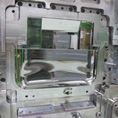
There are many types of plastics, and many plastic materials have different melting times. Since plastics have no specific melting point, the so-called melting point is a temperature range in a molten state. The structure and composition of plastic molecular chains are different, so the impact on its fluidity is also different. , then the temperature control of injection molding parts manufacturers is also very important in the processing of injection molding parts. Today, the editor of JHS Plastics will talk to you about the injection molding process and the temperature control of each process. 1. Mold temperature Some plastic materials require higher mold temperature due to high crystallization temperature and slow crystallization rate, and some require higher or lower temperature due to control of size and deformation, or the need for demolding, such as PC general requirements In order to achieve better appearance and improve fluidity, the mold temperature sometimes needs to be more than 160 degrees. Therefore, the mold temperature has an invaluable effect on improving the appearance, deformation, size and plastic mold of the product. 2. Injection pressure The melt overcomes the resistance required to advance, which directly affects the size, weight and deformation of the product. Different plastic products require different injection pressures. For materials such as PA and PP, increasing the pressure will make their fluidity significantly To improve, the injection pressure determines the density of the product, that is, the appearance gloss. It does not have a fixed value, and the more difficult it is to fill the mold, the higher the pressure of the injection molded part. 3. The temperature of the barrel The temperature of the melt is very important, and the temperature of the injection barrel used is only a guide. The melt temperature can be measured at the nozzle or using the air jet method. The temperature setting of the injection cylinder depends on the melt temperature, screw speed, back pressure, injection volume and injection molding cycle. If you have no experience processing a particular grade of plastic, start with the lowest setting. For ease of control, the shot tank is divided into zones, but not all are set to the same temperature. For long runs or high temperatures, set the first zone temperature to a lower value, this will prevent premature melting and shunting of the plastic. Make sure the hydraulic fluid, hopper closure, mold and shot cylinder are at the correct temperature before starting injection molding. 4. Melt temperature The melt temperature plays a major role in the flow properties of the melt. Since the plastic does not have a specific melting point, the so-called melting point is a temperature range in a molten state. The structure and composition of the plastic molecular chain are different, so its fluidity is The influence of temperature is also different. Rigid molecular chains are obviously affected by temperat...
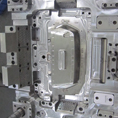
Plastic has ultra-high fluidity, which makes it difficult to produce the size of plastic injection parts in strict accordance with the requirements of the drawings, especially for some injection parts with high dimensional accuracy requirements, the dimensional accuracy of plastic injection parts refers to the size of the obtained plastic parts. The degree of conformity with the dimensions in the product drawings, that is, the accuracy of the dimensions of the plastic parts, how can we make products with high processing precision of injection molded parts? First of all, there are many factors that affect the dimensional accuracy of plastic parts, the first is the mold manufacturing accuracy and the degree of wear of the mold, and the second is the fluctuation of plastic shrinkage and the change of process conditions during molding. The aging change after molding of the plastic part and the structure and shape of the mold, etc. Therefore, in order to reduce the processing difficulty of the mold and the manufacturing cost of the mold, the dimensional accuracy of the plastic part should be designed to be lower on the premise of meeting the requirements for the use of the plastic part. The dimensional tolerance of plastic injection parts can be designed and processed according to the SJ1372-78 numerical standard for plastic parts tolerance. According to this standard, the injection precision of plastic parts is divided into 8 precision grades, of which 1 and 2 belong to the precision injection processing technology level. , only used under special requirements, the standard only specifies the standard tolerance value, and the basic size upper and lower deviation can be allocated according to the matching nature of the plastic parts. For dimensions that are greatly affected by the movable part of the mold, such as the height dimension of the compression part, due to the influence of the thickness of the horizontal surface overflow, the tolerance value is the sum of the tolerance value and the additional value in the table, and the additional value of the 2-level accuracy It is 0.05mm, the additional value of 3~5 precision is 0.10mm, and the additional value of 6~8 precision is 0.20mm. In addition, for dimensions without tolerances, it is recommended to use the 8-level accuracy in the standard. Only by strictly producing according to the tolerance numerical standard of plastic injection parts can the dimensional accuracy and quality of plastic parts be guaranteed. In order to meet the pursuit of human beings for injection molding materials, the performance of products in various industries is constantly improving, and products are composed of accessories, which requires product accessories to be more and more precise, and maximize product accessories to meet the original design. The same is true for the size of the injection molding industry, and the precision injection molding process has become a field where major injection molding companies are comp...

The electric injection molding machine will encounter dissatisfaction with the injection molding during the production injection molding process, and there will be a lack of glue at the right angle of the bone and the welding line. Here I will share some experience with you. Analysis of the situation of dissatisfaction with glue injection: Bone trapped air makes injection molding machine not full Insufficient filling of the injection molding machine caused by the glue and weld line Analysis of the reasons for dissatisfaction with glue injection: When the injection molding machine is working, the injection method of the mold is two-point injection. The injection speed is too fast, which is easy to cause the air trapped at the right angle of the bone to cause dissatisfaction; Solution: Adopt multi-stage injection molding and position switching. The first section fills the flow channel with a medium speed and passes through the glue inlet, switches the position, then the second section fills the vicinity of the bone position with a fast speed, and switches the position, and the third section fills the bone position with a slow speed to discharge the gas, and finally fills quickly, and switches to the safety position. Press the switch position and extend the holding time appropriately.
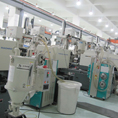
There are many difficulties in plastic injection molding. The injection mold consists of a movable mold and a fixed mold. The production of plastic products requires injection molding. The plastic material is injected into the mold cavity of the injection mold through an injection molding machine, and it is formed after cooling and solidification. What should I do if there is a gloss defect on the surface of the plastic injection molding mold during the mold manufacturing process? The following are the reasons and solutions for the surface gloss defects of plastic injection molding molds summarized by JHS, hoping to help you. 1. Poor mold finish, rust on the cavity surface, etc., poor mold exhaust. 2. The gating system of the mold is defective, the cold slug well should be enlarged, the runner, the polishing main runner, the runner and the gate should be enlarged. 3. The material temperature and mold temperature are low. If necessary, the local heating method of the gate can be used. 4. The processing pressure is too low, the speed is too slow, the injection time is insufficient, and the back pressure is insufficient, resulting in poor compactness and dark surface. 5. The plastic should be fully plasticized, but the degradation of the material should be prevented, the heating should be stable, and the cooling should be sufficient, especially for thick-walled ones. 6. Prevent the cold material from entering the workpiece, and use self-locking springs or reduce the nozzle temperature if necessary. 7. Too many recycled materials are used, the quality of plastics or colorants is poor, mixed with water vapor or other impurities, and the quality of lubricants used is poor. 8. The clamping force should be sufficient.
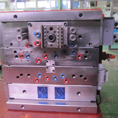
The purpose of mold design and manufacture is to mass-produce injection parts with high efficiency and high quality. To produce high-quality plastic parts, the first step is to have a good mold. A good plastic mold is not only good in appearance, but also if you want to make a high-quality plastic mold. Quality, high-level, high-precision plastic molds, from the following aspects: The smoothness of the injection surface of the mold The polishing of the mold surface is very important, which is one of the very important links that determines the success or failure of mold manufacturing. The surface of the mold is not smooth enough, the surface is uneven, and the surface of the injection molded plastic product will have skin lines and sand grains. In general, it is better to polish the surface into a mirror surface. In addition to the choice of mold steel, polishing personnel, time and technology will have an impact on the polishing mirror effect. Professional mold polishing masters are required, and they must have rich experience to accurately grasp the polishing time. The effect after mirror polishing of the mold. Precision of the mold The accuracy of the mold determines the dimensional accuracy of the plastic parts. The mold manufacturing must first have the conditions for high-precision measurement, such as two-dimensional detectors, three-dimensional detectors and other testing instruments. The principle of object imaging is used to accurately calculate the size and spatial position of the object. The difference of 0.02mm is detected, and the product size and injection volume are accurately measured. The fit of the upper mold of the mold Although there are certain operating standards in the mold industry, there will be slight differences between the molds and injection molding of different mold manufacturers. For example, mold opening and injection molding are not the same manufacturer. Due to the different mechanical equipment and production methods of each manufacturer, there will be risks in production. , affecting product quality and production efficiency. In order to reduce this risk, it is generally better to choose the same manufacturer for mold opening and injection molding. From mold opening to injection molding, manufacturers can control themselves, and problems can be solved in time.

Plastic surface treatment is to use physical, chemical, mechanical and other methods to process the plastic surface. The surface treatment is to meet the particularity of the product, such as corrosion resistance, wear resistance, decoration or other special requirements, called secondary processing; Secondary processing is divided into four categories: printing, laser, coating, and electroplating. 1. Printing The printing on the plastic surface includes silk screen printing, pad printing, thermal transfer printing, hot stamping, etc.; The principle of silk screen printing: silk screen printing is through the extrusion of the scraper, so that the ink is transferred to the substrate through the mesh of the graphic part to form the same graphic as the original. The principle of pad printing: pad printing, also known as surface printing, is to first put ink into a gravure engraved with text or patterns, then copy the text or patterns to rubber, and then use rubber to transfer the text or patterns to plastic moldings surface, and finally the ink is cured by heat treatment or ultraviolet light irradiation. The principle of thermal transfer printing: the pattern is printed on special release paper with sublimation ink in advance, and then the pattern is transferred to the plastic film. The paper film is transferred to the work surface. In the process of transfer or hot stamping, you only need to hot stamp the printed object once, and then various color patterns can be transferred to the plastic parts. In this way, the defective rate of plastic parts can be reduced, and the pictures are exquisite, which can be completed by ordinary hot stamping machines and thermal transfer machines. The operation is simple, the printing is exquisite, and the production cost is low. The product loss is small, the added value is high, and the process decoration is strong. High hiding power and strong adhesion. In line with green printing standards, no environmental pollution. The principle of hot stamping printing: hot stamping is to use special foil to transfer text and patterns to the surface of plastic products at a certain temperature; the advantage is that this method does not require surface treatment, and color printing can be performed with a simple device. In addition, products with metallic luster such as gold and silver can also be printed. 2. Laser Laser engraving, also known as laser printing technology, is a printing method that uses the high energy held by lasers to directly print text and patterns on the surface of materials. According to the different printing methods, it can be divided into scanning laser machines and shielding laser machines. The principle of the scanning laser machine: the scanning laser machine uses two lenses equivalent to the X axis and the Y axis to control the light of the laser, and print the desired pattern or text on the substrate; the advantage is that it is good at printing small text. ; The drawing data is controlled...
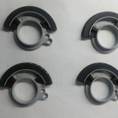
01 Discussion on the concept and process flow of IMD plan 1.1 IMD technical concept The full name of IMD technology is IN MOLD DECORATION, which is a new type of in-mold decoration technology that can realize part injection molding and display decoration at the same time. IMD technology is composed of three technologies: IML, IMF and IMR. The full English name of IML technology is IN MOLD DECORATION, which is often referred to as in-mold insert injection molding technology. To put it simply, the core technology of IML is to complete the film injection molding in the mold, that is, to print the selected film, and then use the molding machine to help shape it, and then cut off the excess edge material, and finally place it in the injection mold. mass production. The film material used in IML technology is significantly different from other technologies. In order to effectively ensure the practicability and aesthetics of the product, the film used in this technology usually has three layers, and the outermost layer is a transparent film with high hardness, which not only can It prevents the film from being scratched and can make the printed pattern appear more clearly; the middle layer is the printed pattern layer, which is made of a film material with high coloring degree, and the last layer is a relatively wear-resistant film with a surface hardness of up to 3H. And the more polished, the brighter, even if it is used for a long time, the printed pattern on the surface of the product will not be easily scratched, and the color can be maintained for a long time. IML technology usually uses injection molding materials such as PC and PMMA. Although it improves the hardness of the product, it is only suitable for flat curved products due to the lack of sufficient elasticity and small curved surface. Therefore, in order to improve this defect, it is also tried to add flannel, leather and other materials with certain elasticity to complete the injection molding of the product. IMR is an in-mold transfer technology, and its full English name is IN MOLDING ROLLER. IMR technology is different from IML technology. IMR rolls the printed film into a roll bag, and then installs it into the injection molding machine to complete the subsequent injection molding process. The significant difference between IMR technology and other technologies is that after the injection molding is completed, the ink will only appear on the surface of the product, and will not splash around, and the film will not come off the web. IMF is an in-mold injection technology suitable for multi-curved surfaces, which is reformed and developed on the basis of IML technology. The full English name is IN MOLDING FILM. The technical process of IMF and IML is basically similar. The only difference is that in order to enhance the elasticity of the product, IMF will stretch the film before injection to make it meet the demand for curved surface production, and then place it into the mold for inj...
 online service
online serviceScan to wechat :
